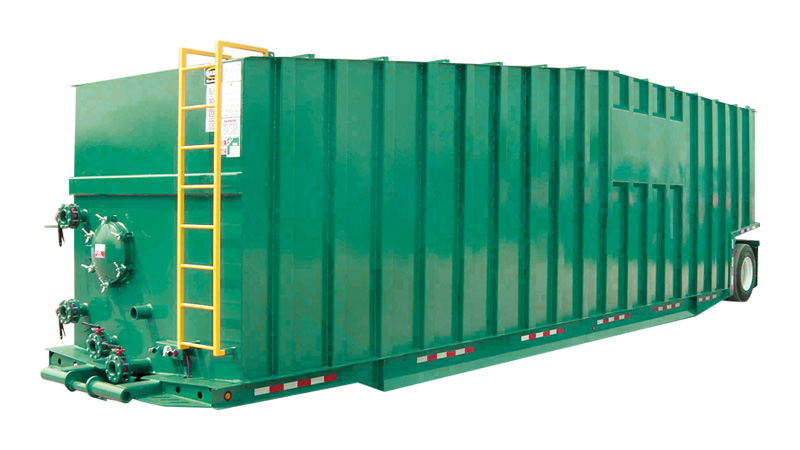On drilling site there are many mud tanks for the normal drilling operation. Mud tanks are not high tech, but they are indispensable.
When drilling rigs need to switch from one kind of mud to another, mud tanks need to be thoroughly cleaned so that drilling muds would not crossly contaminate.
Traditional tank cleaning method is manual. Workers with heavy protection clothes enter mud tanks, exposing themselves to the hazardous enclosure and apply high pressure solution spray to clean mud tanks. This process is tedious and labor intensive, in hazardous environment. Sometimes the drilling rigs are in urgent of clean mud tank, and the only way to speed up is to clean the mud tanks with more workers, which adds economic burden to drilling operation.
In order to solve this problem, GN Solids Control performed extensive research, and in-depth development work. The result is GNTC-30 series automatic tank cleaning system.
The system composes of a buffer tank, which stores cleaning solutions. A powerful centrifugal pump pressurizes the solution and send liquid to tank cleaning machine (TCM). TCM is a well-engineered sprayer, which can scan the inside of mud tanks at pre-set scanning pattern. Usually tank cleaning is finished with one complete scanning cycle. If super clean inside is needed, say for very expensive drilling mud for critical drilling, secondary scanning is deployed.
Suck pump will collect fluid on the floor of mud tank and transfer the fluid to a inclined plate clarifier(IPC) by GN Solids Control, through a filter, which stops big items such as screws, big drilling cut from entering such pumps. It is quite normal that a lot of barite would deposit on mud tank floor. Because of its cost, barite needs to be recovered. So suck pump should be able to transfer heavy barite.
Once the sucked-in liquid is transferred to IPC, this highly efficient clarifier quickly separate solids including barite and solution. Solids will go to the bottom of IPC. Clarity of solution increase with decrease in liquid depth, with the cleanest water on the surface of liquid. This clean water will overflow to buffer tank, to be pumped again to clean mud tank to establish closed loop system.
The IPC by GN Solids Control has specially designed shape, which allows quick establishment of solids inside the tank. A membrane pump will transfer the deposited solids, including barite, to collect bin.
One major advantage of such automatic cleaning system is its efficiency. In general, a mud tank can be cleaned in 30 minutes. This is much more efficient compared to the manual cleaning process, which usually takes hours of hard labor work.
Another advantage of such system is safety, because exposure to hazardous enclosure is minimized. Operators only need to enter mud tanks to setup cleaning machine, and the rest of the cleaning process is done by the machine, with operator working on the outside.
GN Solids Control is continually to developing more efficient, more intelligent automatic mud tank cleaning system for different applications.
